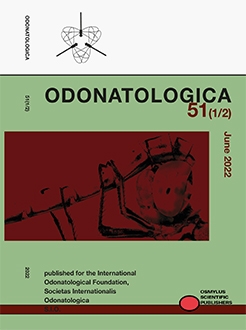The thermoregulatory behaviour of the autumnal Sympetrum striolatum was studied and analysed at the end of its flying season in November from 2011 to 2021. Only on days with intense solar radiation did it leave its roosting sites in the treetops and became active at and around breeding ponds. We describe the perch site selection and body posture for basking, avoiding wind, feeding, and reproductive activities after warm-up. Ectothermic thermoregulation enabled flight largely independent of air temperature; we saw a male flying at 3.7°C and a tandem ovipositing at 6.0°C. In the afternoon all individuals returned to their roosting sites. If they were too cold for immediate take-off, they wing-whirred and flew after 2–3 minutes. Wing-whirring was performed at ambient temperatures between 3.8 and 13.6°C. We suppose that this behaviour is obligatory when insolation is insufficient, especially when the sun is blocked by clouds. The combination of ecto- and endothermic thermoregulation is considered the main key factor for this species' exceptionally effective adaptation to cold.
How to translate text using browser tools
1 June 2022
Thermoregulatory behaviour of Sympetrum striolatum at low temperatures with special reference to the role of direct sunlight (Odonata: Libellulidae)
Angelika Borkenstein,
Reinhard Jödicke
ACCESS THE FULL ARTICLE

Odonatologica
Vol. 51 • No. 1-2
June 2022
Vol. 51 • No. 1-2
June 2022
Anisoptera
body posture
diel pattern of activity
dragonfly
Ectothermy
endothermy
late flying season




